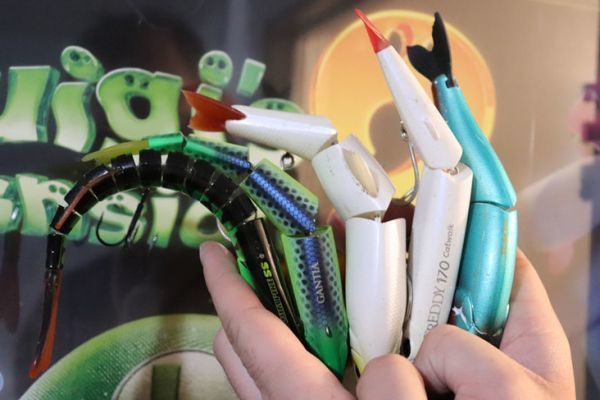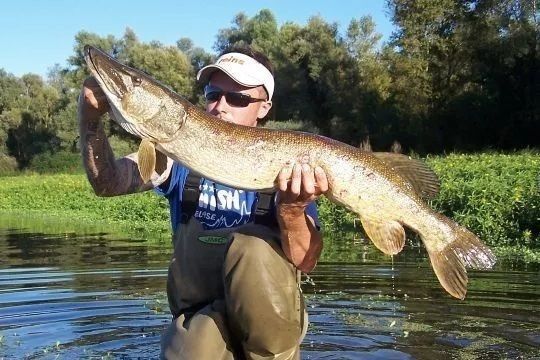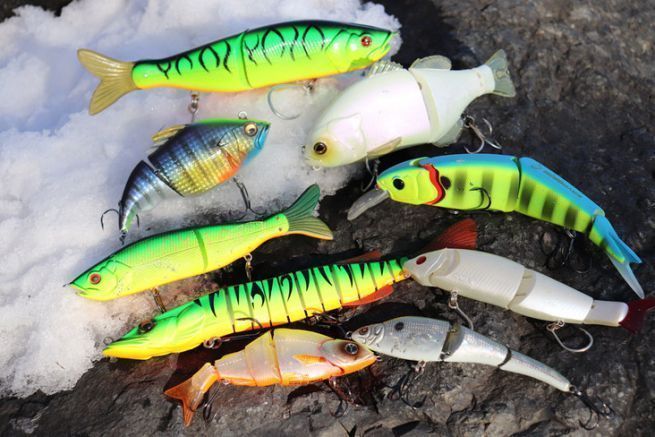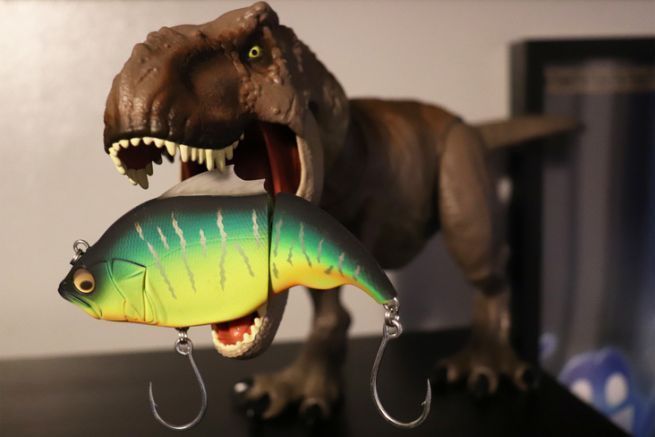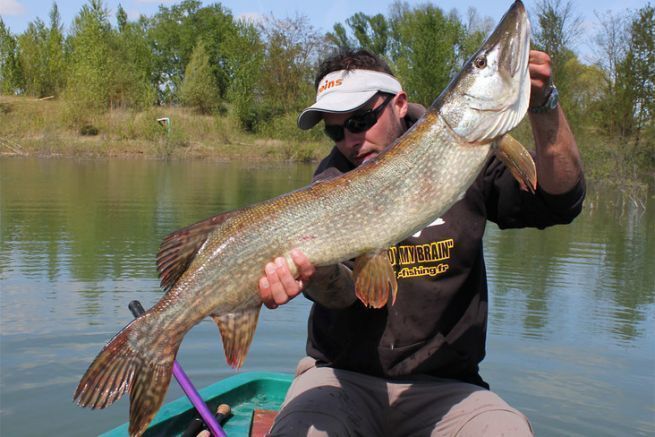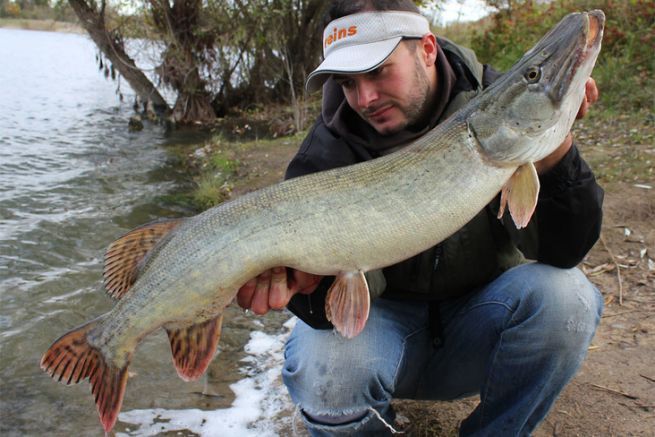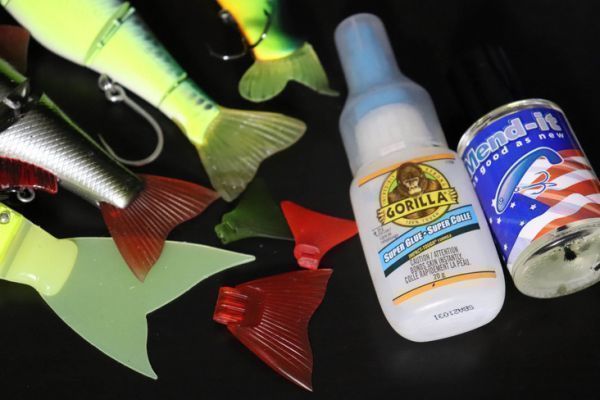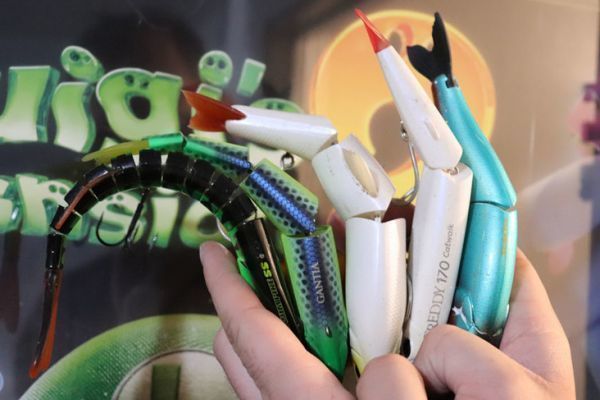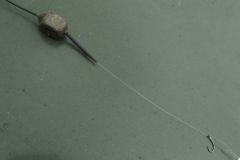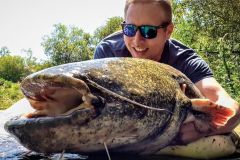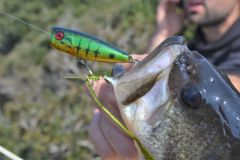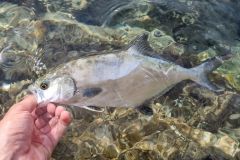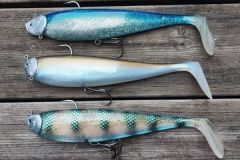Internet and fishing shows
The Internet, and YouTube in particular, is a good source of information for seeing how a lure swims. There are videos demonstrating a number of lures, with underwater views.
Another option is to attend events where decoys are presented, but it's not always easy to get there.
If these two options don't give you a clear picture of the lure you're interested in, there's still the option of observing it to guess its swim.
Observation
The third solution is to imagine the swim of the lure and trust your instincts. With experience, observation and deduction, just by looking at the picture, you'll be able to imagine the swim of a hard swimbait without too much error.
Its shape gives information about its horizontal swimming action, but what's hidden inside, such as its density distribution, gives information about its swimming depth. For this point, you must rely on the information given by the manufacturer, such as floating, slow sinking or fast sinking.
Returning to its shape, there are several points to consider:
- The number of sections
The number of sections will have an influence on whether the lure's speed of movement is increased or reduced, as well as the amplitude with which it moves off its retrieve axis.
A lure in two sections will take some time to execute a complete movement, while a lure in several sections will complete its movement more quickly.

This initial information helps to identify lures that require slow retrieval from those that need to be brought in quickly.
- The range of motion between sections
In addition to the number of sections, the freedom of movement between them will give the lure its swimming action. The greater the amplitude, the more the lure will undulate strongly and become unstable. On the contrary, the smaller the amplitude, the weaker the lure will undulate.
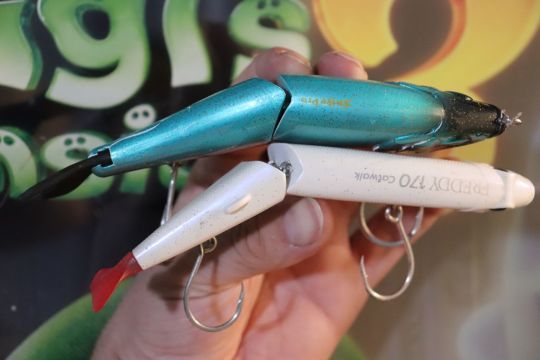
There are even lures that combine the two, with the amplitude of movement increasing the closer you get to the tail. In this case, the lure maintains its position at the front and undulates at the rear.
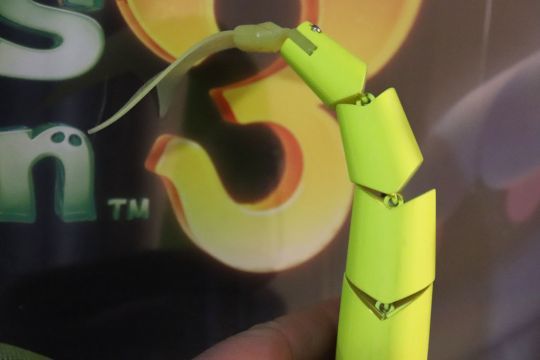
- Section length
Section length is often linked to the number of sections. The larger the lure's sections, the more stress the water will put on them. The lure will have to move further away from the retrieve axis to escape this counter-pressure and change direction.
Here's the major difference between glide baits and swimbaits. The former have a wide S-shaped swimming action, while the latter tend to flag.
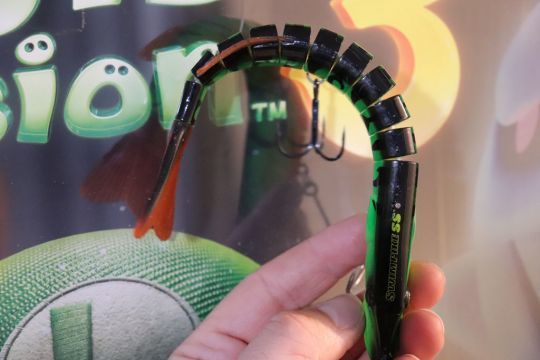
- The tail
The last section of the lure, often a tail, will give information on the fluidity of the swim. A hard tail will execute its movement quickly, while a soft tail will give more fluidity to the movement.

- Rolling
The rolling action of a hard swimbait depends mainly on its width. A thin lure will tend to capsize at every change of direction, while a thick lure with good support will remain stable and straight.
- The material
Some lures include soft sections, often at the end. This section acts like a flexible tail, giving more flexibility to the end of the lure.
- The bib
On a hard swimbait, a bib will force the lure to follow its retrieve axis and will slow down its swim as soon as you stop reeling it in. It generally has little effect on the rest of the lure's swimming action, but increases its ability to dive.
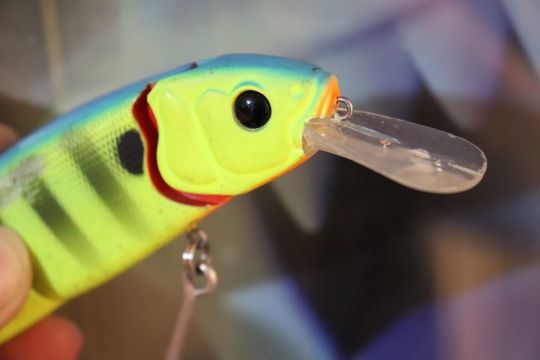
Finally, here's a table outlining how a hard swimbait swims, depending on its design. The possibilities are so numerous that it's impossible to describe every single case. The important thing is to understand the principle so as to be able to apply it to any lure.
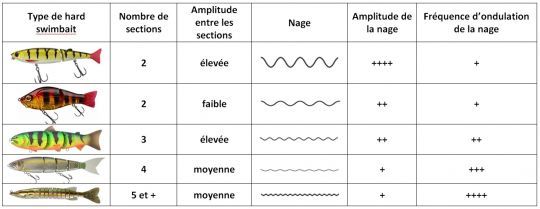
Other parameters can change a lure's swimming action, but to put it simply, the more the lure is sectioned, the more likely it is to swim tightly and close to its retrieve axis.
There's no such thing as a perfect swim, and all lures are of interest. When putting together a box for fishing with hard swimbaits, it's better to have a variety of lures with different numbers of sections, rather than all these lures with the same number of sections. Depending on weather conditions and water clarity, this or that model will work better.
Designing a hard swimbait isn't that simple, and neither is choosing one. Once you know how to interpret all the parameters that determine its swimming action, you'll be able to imagine what it will look like underwater. This helps avoid buying mistakes, with lures that spend their lives at the bottom of a box.

 /
/ 